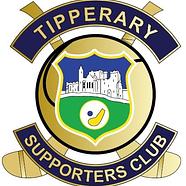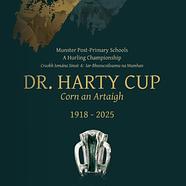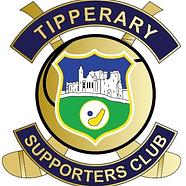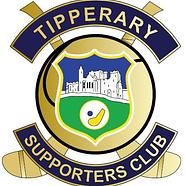Kilkenny and Tipperary will always be hotter than February.
The word on punditry’s street claims league action is nearly irrelevant. Maybe so but certain factors endure in whatever context. These two counties use each other as measurement. For both parties, the guiding conviction stands straightforward: if a player can hack this dynamic, he can hack all the furlongs to Croke Park.
Kilkenny started Sunday afternoon in UPMC Nowlan Park with commendable intent, relishing exchanges, offering brusque markers. Two Tipperary players had gone off injured, nothing untoward in question, after 12 minutes.
February Centigrade looked to be edging into February Fahrenheit.
Yet the home team flattered to deceive, repeatedly fluffing possession, their touch in the tight veering between ragged and frazzled. The visitors simply had better hurlers around middle third. Better in decision making, better in tight circumstance.
Jake Morris, the sinuous side of menacing, put Tipperary three points ahead on 17 minutes, 0-5 to 0-2. Noel McGrath, the economical side of mobile, pulled strings like a Roald Dahl character, expressionless and lethal.
Possible summer morals lie in evident spring details. Séamus Callanan’s wonderful pass to Jason Forde in the 27th minute, setting up an opening goal? Old instincts enlivening present opportunities. That moment was the ghost of coaching past, a touch from behind the curtain of Éamon O’Shea’s input.
This man’s way, between late 2000s and mid 2010s? A soft avalanche of incremental advantages via spatial awareness and quick hands. The net shakes. Snow creaks down the game’s mountain.
Watch again that passage. Callanan quickly processed a direct medium length clearance. Pádraig Walsh got sucked into a needless two on one situation in centre back precincts.
Needless, because Huw Lawlor was ushering Tipperary’s full forward away from goal. The most Callanan could have done, bar this error, was pivot and point.
Conor Heary, quite promising but not a corner back, enlarged the opening by failing to track. Forde, his man, sliced through as if on skis.
The net shook. Tipp were seven points to the good, riding a blizzard.
Half-time’s margin swelled to 12 points, as the leaders produced some fine hurling. But there were so many opposition errors, most of them unforced. No one doubted Tipperary’s superiority but you could feel the collective wince among home supporters.
Kilkenny are trying, in the phrase, to play out from the back. This gambit is overdue and required in any ambitious 21st-century team’s repertoire. But short puckouts can become the opium of false sophistication. There remain certain basic requirements for the gambit’s success, same as long deliveries made off the front foot best discommode defenders.
Limerick dissolve many difficult challenges in the solvent of footwork and technique. Following a short puckout or intricate play at the back, the next man given possession needs to be facing the opposition goal. If facing his own goal, that man tends to be flat to the ball, feet planted, his own bodyweight a disadvantage.
Precisely this scenario occurred six minutes into the first half’s added time. Terrific defending by Mikey Butler and Huw Lawlor contained Séamus Callanan, out in left corner. Conor Heary cleaned up and transferred to Pádraig Walsh, doing well in his support play, falling deep.
Then came a killing error. The worry, from a Kilkenny perspective, is not just the incident’s execution but the incident’s conception.
Walsh went short to Darragh Corcoran, a back facing his own goal, feet planted. He got robbed by Alan Tynan, leading to Conor Bowe’s shot and Jake Morris’ neat conversion of rebound chance into second goal, levering Tipperary 12 up.
That Corcoran was willing to take responsibility on himself is good. That he had to do so for want of a safer and more coherent option is not good. Kilkenny are anything but set up in optimum fashion.
The conception angle involves no exaggeration. Another version of this incoherence occurred three minutes earlier.
Paddy Deegan picked up possession between right corner back and right wing back. He took a moment, weighing possibilities. Then he went more or less flat across to left midfield, because Shane Walsh was entering the area.
The same problem, a little different. Walsh faced his own goal, momentarily static as he waited for the ball to arrive, vulnerable to interception. Precisely this scenario occurred and a Jason Forde point accrued.
There is a reason why Ballyhale Shamrocks and Limerick, by far hurling’s two most successful outfits over the last five seasons, play in a particular shape. Their chosen arrangement pivots on keeping two full forwards in a notably high line. This shape, allowing abundant opportunities for dangerous deliveries, provides insurance against over intricacy in middle third.
Walsh would have been better off trying to occupy a pocket of space at top of the left, a space Deegan could have hit with a long diagonal ball. Such a delivery, because much less risky, would have been doubly better. Morals quickly need to be drawn, personnel wise and tactics wise.
Tipperary travelled to Nowlan Park for a league tie in April 2009 and got hockeyed by 17 points. Their manager Liam Sheedy radically rethought his team for the championship and brought that group to the brink. Ascent followed 12 months later.
Tipperary went to UPMC Nowlan Park for a league tie in February 2023 and meted out a six-point hockeying. Now Derek Lyng and colleagues must get down to some rigorous thinking.







